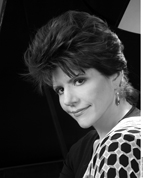A packed Weill Recital Hall greeted flutist Margaret Cornils for this recital, which was sponsored by MidAmerica Productions. The first half was made up of three of the most popular pieces in the flute repertoire: Bach’s B Minor Sonata, Debussy’s Syrinx, and Poulenc’s Sonata. Some of Bach’s flute sonatas were written for flute and basso continuo (a keyboard instrument, whose left hand is doubled by a bass instrument such as a cello, and whose right hand improvises chords stipulated by the composer.) The B Minor Sonata, however, is written for flute and an obbligato (fully written-out) keyboard – without cello. Although cellist Kevin Price blended well with the other fine performers, his part was superfluous.
Due to its quasi-improvisatory character, Syrinx is a different piece for each flutist. Cornils’ rendition was somewhat matter of fact, but nevertheless effective. The Poulenc Sonata was the most satisfying offering on the first half. Her phrasing in the opening of the Cantilena was pure perfection, and the last movement (presto giocoso) displayed an impressive third-octave technique and clear double-tonguing.
The second half of the program was as unknown as the first half was familiar. It opened with Gary Schocker’s Musique Francais, written in 1997. This is a pleasant, skillfully written composition, with several tips of the hat to Poulenc. The third movement is a virtuoso’s tour de force in which Cornils again showed her fine technique. The next piece, Pandean Fable by Clifton Williams, effectively displayed the haunting tone color of the bass flute.
The recital concluded with Paul Agricole Genin’s arrangement of Carnival of Venice. A surprisingly interesting, beautiful and rather lengthy introduction preceded the familiar trite tune. Once the introduction was over, the virtuosic variations which followed exploited all the tricks up the flutist’s sleeve. Cornils was up to the challenge and the audience rewarded her with a standing ovation.
Sharon Jenson was the excellent pianist.

 The Chihara Trio, formed in 2009 and comprised of Penn State School of Music faculty members Anthony J. Costa on clarinet, violist Timothy Deighton and pianist Enrico Elisi, performed a diverse array of works that were sometimes interrelated in subtle, yet special ways. The clarinet/viola/piano trio repertoire isn’t often heard, so the forming of this ensemble was a great idea. The trio’s inaugural season has included performances throughout Pennsylvania and Maryland, and they made their New York debut with this concert.
The Chihara Trio, formed in 2009 and comprised of Penn State School of Music faculty members Anthony J. Costa on clarinet, violist Timothy Deighton and pianist Enrico Elisi, performed a diverse array of works that were sometimes interrelated in subtle, yet special ways. The clarinet/viola/piano trio repertoire isn’t often heard, so the forming of this ensemble was a great idea. The trio’s inaugural season has included performances throughout Pennsylvania and Maryland, and they made their New York debut with this concert. Pianist Mikhail Lifits is on quite a winning streak. At his recent solo recital as First Prize winner of the Hilton Head International Piano Competition, his impressive biography did not even list his top prize in the Busoni Competition, which he had won too recently to list!
Pianist Mikhail Lifits is on quite a winning streak. At his recent solo recital as First Prize winner of the Hilton Head International Piano Competition, his impressive biography did not even list his top prize in the Busoni Competition, which he had won too recently to list! Pianist Aglaia Koras suffered through a car accident on her way to her concert on November 5th, so it wouldn’t be fair to go into detail about technicality, memory or specifics of her program. It must be said, however, that her sold-out, full-house crowd was happy to hear her, and I felt that she gave some of the most thoughtful, touching playing of Beethoven and Chopin I have heard her play. She was the come-back kid, and she should be proud to have had the courage to put on a program that many others would have canceled.
Pianist Aglaia Koras suffered through a car accident on her way to her concert on November 5th, so it wouldn’t be fair to go into detail about technicality, memory or specifics of her program. It must be said, however, that her sold-out, full-house crowd was happy to hear her, and I felt that she gave some of the most thoughtful, touching playing of Beethoven and Chopin I have heard her play. She was the come-back kid, and she should be proud to have had the courage to put on a program that many others would have canceled. 